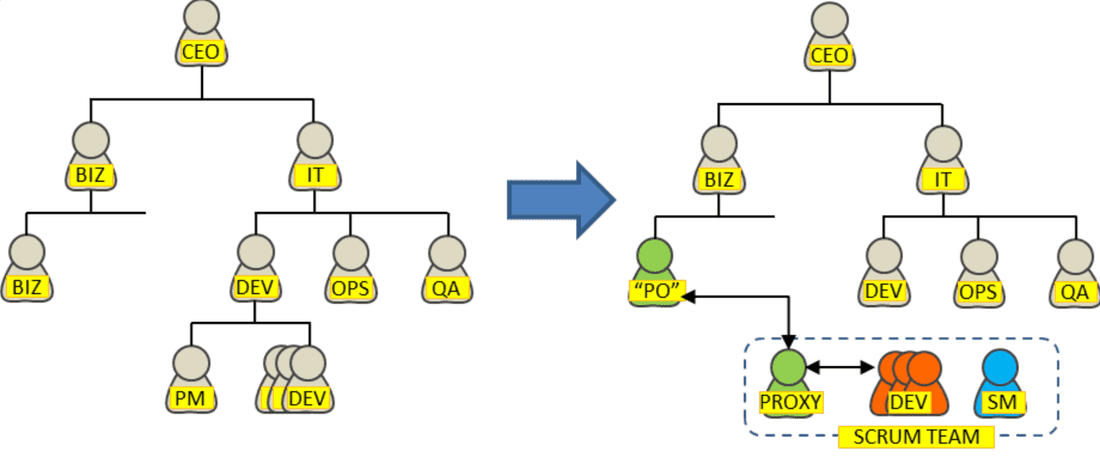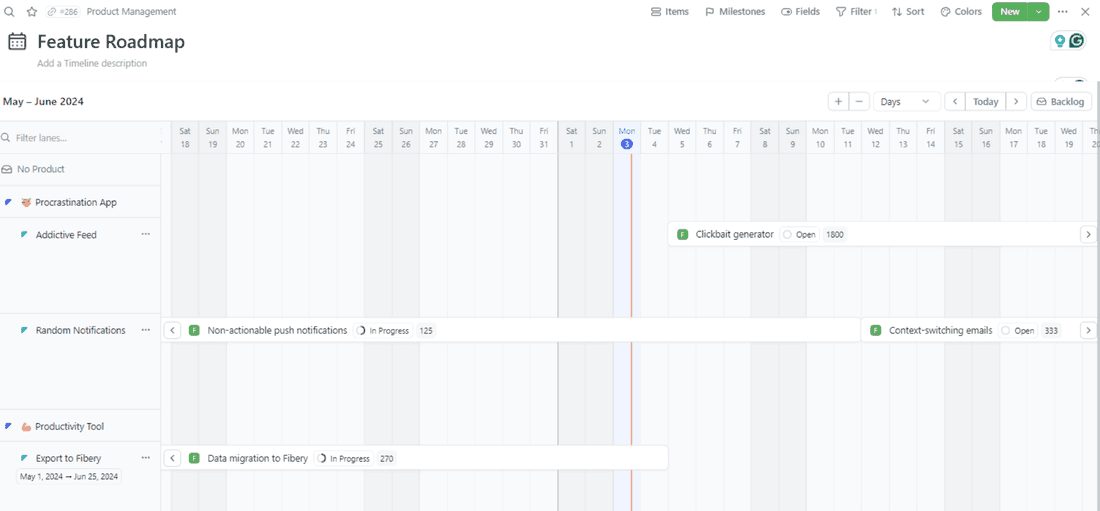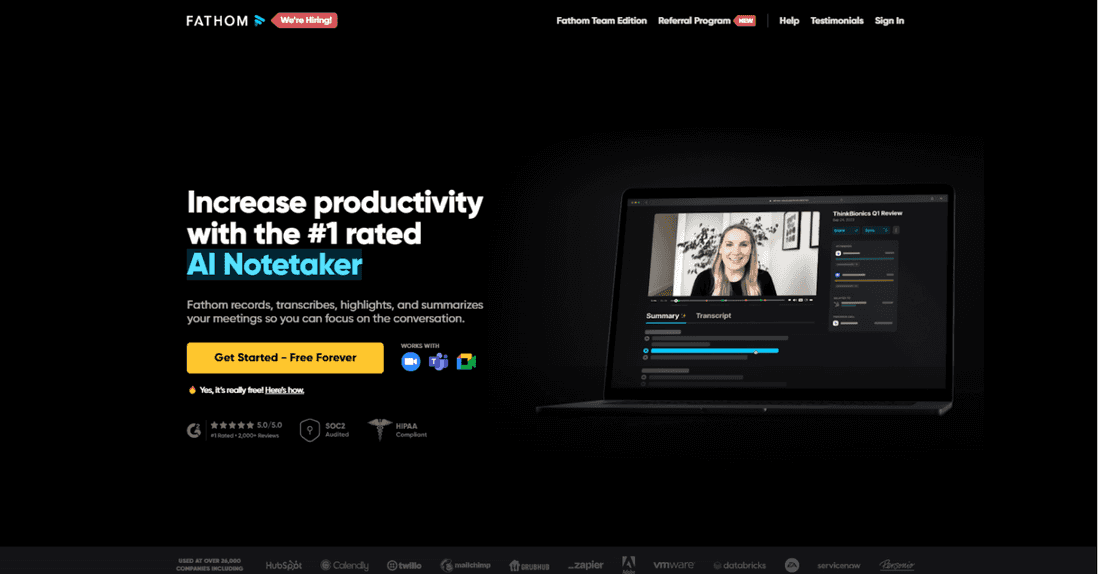What Is a Proxy Product Owner? Roles, Tips & Skills
- What Is a Proxy Product Owner?
- What Is the Role of a Proxy Product Owner?
- Backlog Management
- Requirement Clarification
- Stakeholder Communication
- Sprint Planning and Review
- Quality Assurance
- Team Support
- What Skills Does a Proxy Product Owner Need?
- Proxy Product Owners vs Product Management
- The Top 5 Tips to Make It as a Proxy Product Owner
- The PM’s Hot Take
- Conclusion
- FAQ
- A Proxy Product Owner (PPO) serves as an intermediary between the actual Product Owner and the development team.
- They handle day-to-day tasks to ensure the product development process runs smoothly.
- The role often emerges in complex projects where the Product Owner cannot be fully engaged with the team.
What Is a Proxy Product Owner?
A Proxy Product Owner (PPO) acts on behalf of the Product Owner to ensure that the development team receives clear guidance and that product goals are met.
The Product Owner delegates the PPO to make decisions within a specific scope without consulting the OG PO (we love abbrevs).
They help bridge the gap between the Product Owner’s strategic vision and the development team’s execution.
Disclaimer: A Proxy PO is not a Product Owner. They can’t:
- Make key decisions about the product and be accountable for their outcomes
- Control the product’s budget
- Define the product’s vision or strategy
- Have the last say over the backlog and its items
Here’s how the PPO fits within the organizational chart:

What Is the Role of a Proxy Product Owner?
The PPO’s key responsibility is to ensure stable demand management for the Development Team. It is not a decision-making or value-management role.
Here are a few tasks PPOs handle daily:
Backlog Management
The main task of a Proxy is to prioritize and maintain the product backlog to reflect the Product Owner’s strategic priorities.
They regularly update the backlog based on:
- Development team’s progress
- Feedback from stakeholders
- Customers’ input
Requirement Clarification
The Proxy explains and clarifies user stories and requirements to the development team.
Sometimes, they organize requirement grooming sessions to ensure the team fully understands the tasks.
On a daily basis, though, they are the go-to person for all the details if the original task isn’t clear to a Dev.
Stakeholder Communication
PPOs also act as a communication bridge between the Product Owner and stakeholders, ensuring that all parties are aligned.
They mostly do this by reporting progress and any issues to stakeholders. This ensures that all expectations are managed and delivered.
Sprint Planning and Review
The Proxy PO assists in planning sprints and reviewing completed work to ensure it meets the defined acceptance criteria.
For example, during sprint planning meetings, they will assist the PO with task prioritization. During review meetings, they will facilitate assessing completed work.
Quality Assurance
PPOs ensure that the development work meets the Product Owner’s quality standards and acceptance criteria.
To do this, they conduct regular reviews and tests to maintain product quality.
Team Support
Proxies provide ongoing support to the development team by addressing any blockers they encounter.
For example, if the development team spots a technical issue or resource constraints, they go to their PPO, which resolves the problems as fast as possible.
This keeps the work moving, the development team happy, and the Product Owner unbothered with daily struggles.
What Skills Does a Proxy Product Owner Need?
A successful Proxy Product Owner needs a mix of hard and soft skills to manage tasks effectively and maintain alignment with the Product Owner and the development team.
PPO’s Hard Skills:
A good PPO has a strong set of hard skills, such as:
- Product Backlog Management Tools: As a PPO, you need to master managing and prioritizing the product backlog using tools like Fibery, Jira, or Trello.
- Requirement Analysis: PPOs analyze and break down complex requirements into actionable tasks for the development team. To achieve this, you should create detailed user stories and acceptance criteria based on high-level requirements.
- Technical Understanding: As a PPO, a basic understanding of the product’s technical aspects is a must. This allows you to communicate effectively with the development team. Familiarize yourself with the software development lifecycle and the technologies used in the project.
PPO’s Soft Skills:
The key soft skills of a good Proxy are:
- Communication: You need excellent verbal and written communication skills to facilitate clear and effective interactions with the Product Owner, stakeholders, and the development team.
- Leadership: Strong leadership abilities help you guide, motivate, and maintain high morale in the development team.
- Problem-Solving: You should be quick to identify issues and develop practical solutions for things like resolving conflicts within the team or addressing technical challenges.
- Adaptability: Quick adaptation to changing project requirements and priorities will also help you stay sane when things go wild.
Proxy Product Owners vs Product Management
While both Proxy Product Owners and Product Managers play vital roles in product development, their focuses and responsibilities differ.
Here are the key differences between the two:
Proxy Product Owner
- Focus: Execution and facilitation of day-to-day tasks to ensure development aligns with the Product Owner’s vision.
- Responsibilities: Managing the backlog, clarifying requirements, supporting the team, and ensuring quality.
Product Manager
- Focus: Strategic vision, market analysis, and product roadmap definition.
- Responsibilities: Identifying market needs, defining product features, setting long-term goals, and driving product strategy.
If you’re still unsure how exactly the Proxy differs from a regular product owner, here’s how their daily to-do lists compare:
| Task | Proxy Product Owner | Product Owner |
| Morning Stand-Up Meeting | Lead daily stand-up with the development team to discuss progress and blockers. | Join the stand-up to get updates on progress and any issues. |
| Backlog Management | Prioritize and update the product backlog based on team feedback and progress. | Review high-level priorities and adjust the product roadmap as needed. |
| Requirement Clarification | Clarify user stories and requirements with the development team. | Ensure that high-level requirements align with the product vision. |
| Stakeholder Communication | Provide regular updates to stakeholders on project progress. | Engage with key stakeholders to gather feedback and align on strategic goals. |
| Sprint Planning | Assist in planning upcoming sprints, including task prioritization and allocation. | Set the overall direction and priorities for upcoming sprints. |
| Issue Resolution | Address and resolve any immediate issues or blockers faced by the development team. | Escalate and discuss larger strategic issues with senior management. |
| Quality Assurance | Conduct reviews and tests to ensure work meets acceptance criteria. | Define quality standards and ensure they are met in the final product. |
| User Feedback Analysis | Collect and analyze user feedback to inform backlog adjustments. | Evaluate user feedback to inform long-term product strategy. |
| Documentation | Update project documentation with current status and any changes. | Maintain high-level documentation on product vision, goals, and strategy. |
| Team Support | Provide ongoing support and guidance to the development team. | Provide strategic guidance and support to the Proxy Product Owner and other teams. |
| End-of-Day Review | Review the day’s progress with the team and adjust plans as needed. | Review overall project progress and adjust strategic plans as necessary. |
This daily tasks for both a Proxy Product Owner and a Product Owner highlights their distinct but complementary roles in the product development process.
The Top 5 Tips to Make It as a Proxy Product Owner
Becoming a PPO is a fun – yet challenging – process. Here are some pro tips to guide you:
Understand the Product Vision
Gain a deep understanding of the Product Owner’s vision to ensure alignment and accurate representation.
Regularly meet with the Product Owner to discuss the product vision and strategy.
Ensure all insights about product vision and its direction are documented and managed in one place.

Develop Strong Organizational Skills
Efficiently manage and prioritize tasks to keep the project on track.
Use project management tools and techniques to organize and prioritize your workload.
We recommend you take Fibery’s Product Management template to understand the specifics of managing product development projects.

Enhance Communication Abilities
Improve your ability to articulate requirements and updates to the team and stakeholders clearly.
Attend communication workshops and seek feedback on your communication style.
You can also try out some AI-speaking coaches, like Fathom or Yoodli, to see how you perform during meetings. This can give you a great overview of what aspects of your speaking are worth improving.

Build Technical Knowledge
Understand the technical aspects of the product to communicate effectively with the development team.
Take technical courses or workshops relevant to your product’s technology stack.
You can also check out some book recommendations from the tech world. It’s one of the fastest ways to understand what all of this scary jargon means.
The PM’s Hot Take
“Being a Proxy Product Owner is about balancing strategic vision with practical execution. It’s crucial to bridge the gap between the high-level goals of the Product Owner and the day-to-day realities of the development team.”
Conclusion
The role of a Proxy Product Owner is essential for ensuring that the product development process runs smoothly and aligns with the Product Owner’s vision. By mastering the necessary skills and adopting best practices, you can excel in this role and contribute significantly to your team’s success.
FAQ
Which of the following is correct about proxy product owner?
A Proxy Product Owner (PPO) acts on behalf of the actual Product Owner (PO) to ensure that the development team has clear guidance and priorities. The PPO bridges the gap between the PO and the team, ensuring that the product vision and goals are consistently communicated and adhered to throughout the development process.
Who can play the role of a proxy product owner in the absence of PO?
In the absence of the Product Owner, a Proxy Product Owner can be a senior team member, such as a Business Analyst, Project Manager, or a senior developer, who has a deep understanding of the product and its strategic goals. This person must have strong communication and organizational skills to effectively convey the Product Owner’s vision and priorities to the development team.
What are PO and PPO?
PO stands for Product Owner, a role responsible for defining the product vision, managing the product backlog, and ensuring that the development team delivers value to the customer. PPO stands for Proxy Product Owner, a role that supports the PO by acting as an intermediary, providing daily guidance to the development team and ensuring that the product backlog is managed and prioritized in line with the PO’s strategic objectives.
What are proxy products in business?
Proxy products in business refer to products or services that stand in for the actual product to represent its features, functionalities, or benefits. These can be prototypes, models, or early versions used for demonstrations, testing, or feedback gathering before the final product is fully developed and launched.
What are the main responsibilities of a proxy product owner?
The main responsibilities of a Proxy Product Owner include managing the product backlog, clarifying requirements for the development team, ensuring that the product vision is maintained, facilitating communication between the PO and the development team, and supporting the team in meeting their goals and deadlines. The PPO plays a critical role in ensuring that the product development process runs smoothly and aligns with the overall strategic objectives.
Psst... Wanna try Fibery? 👀
Infinitely flexible product discovery & development platform.